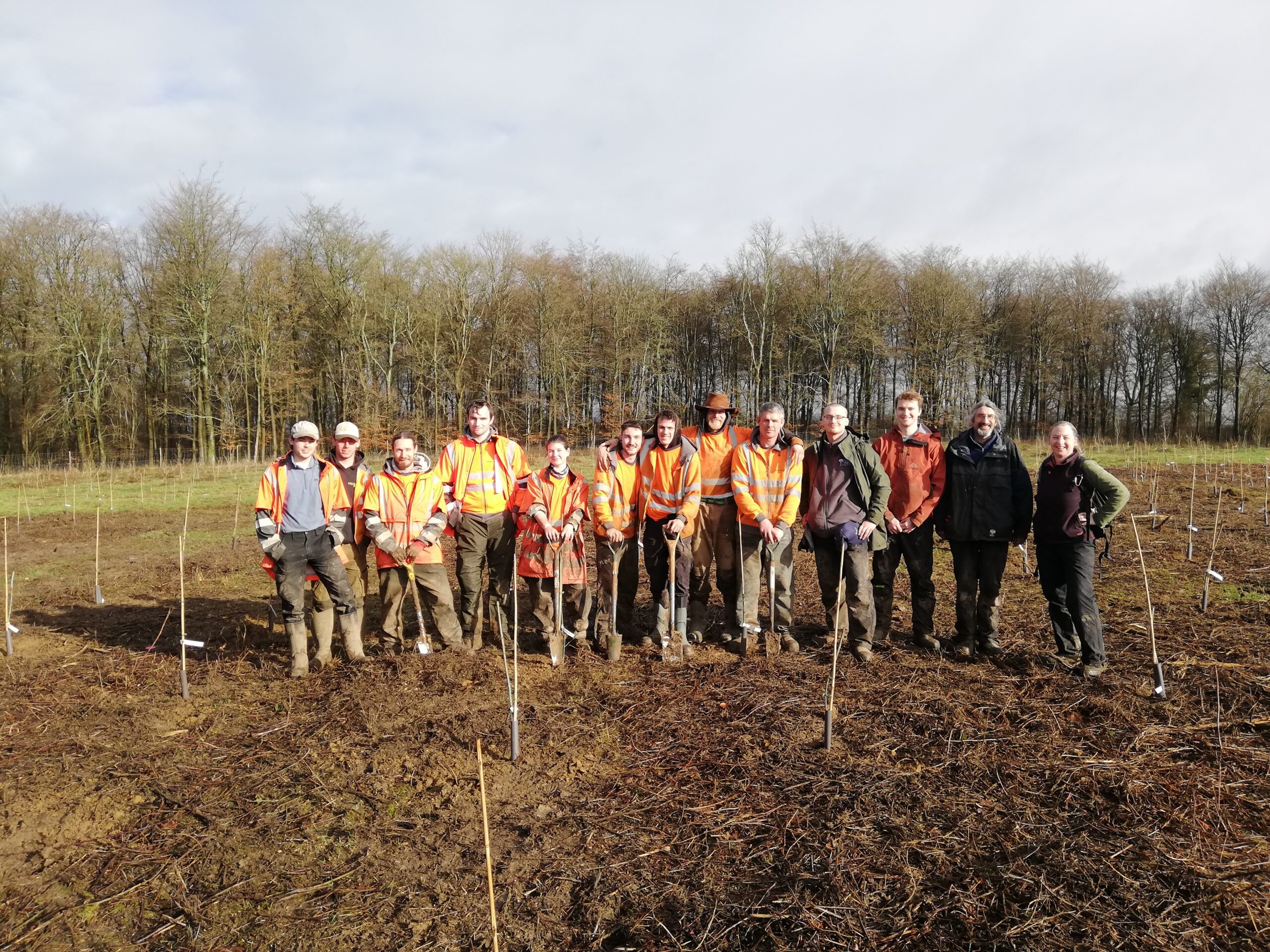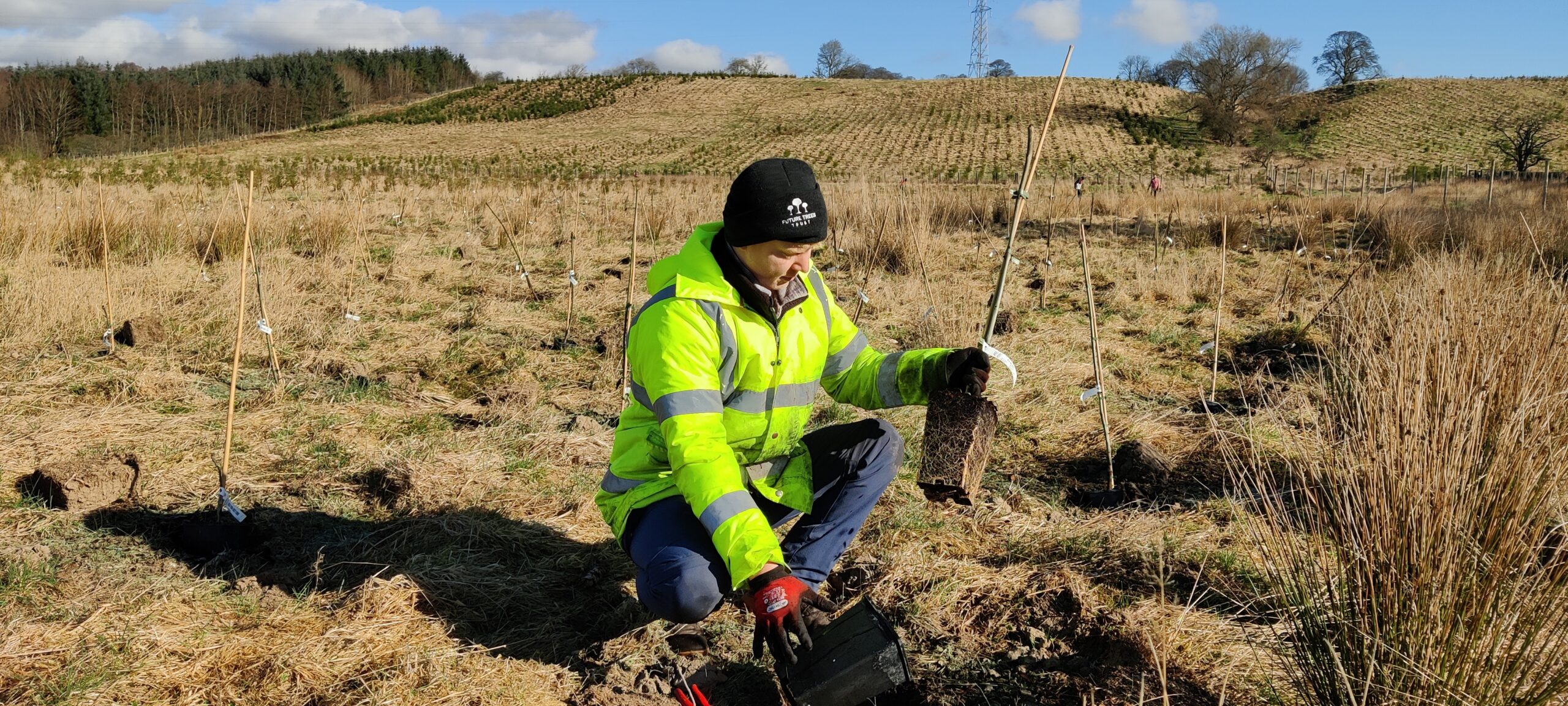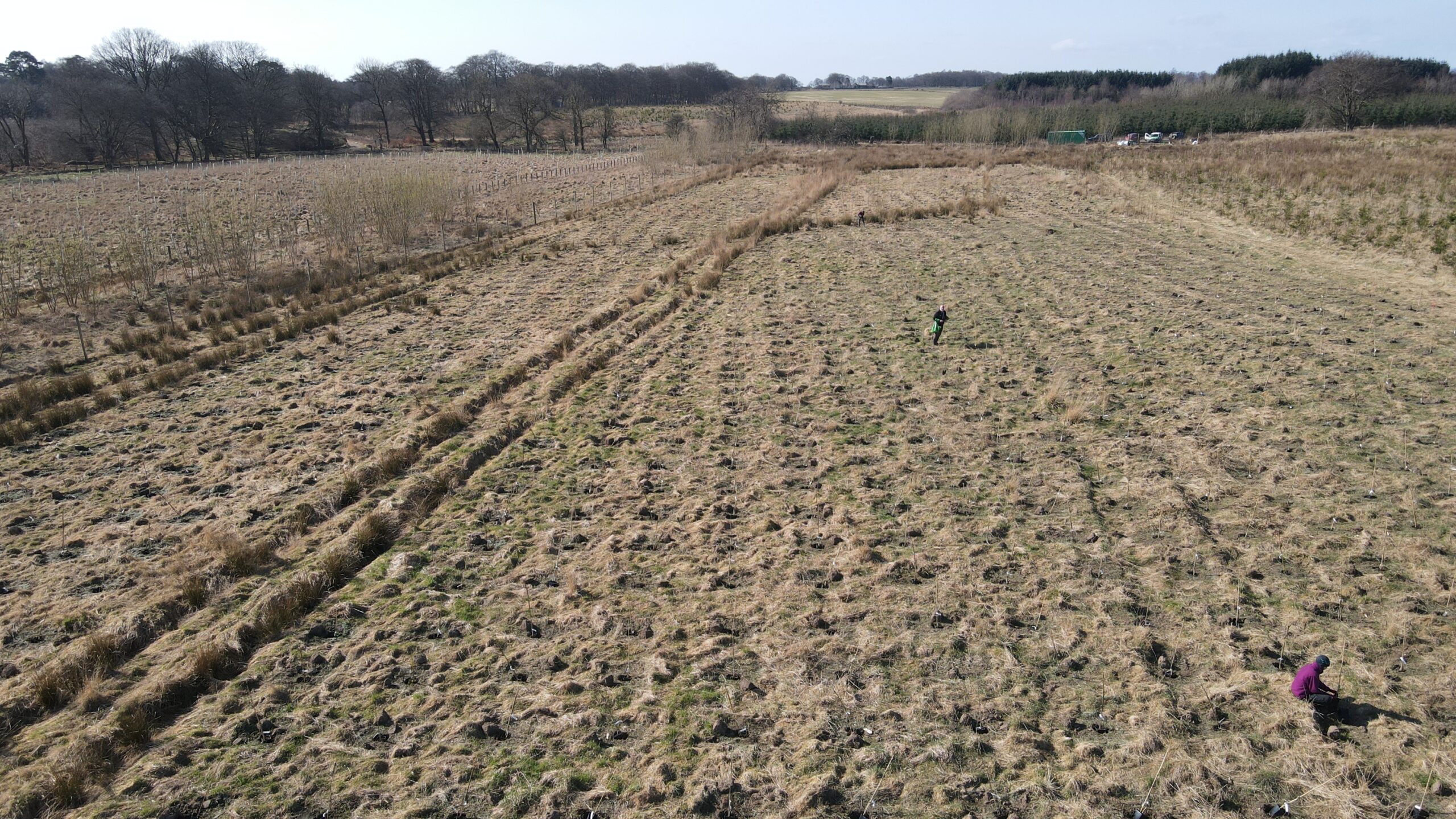By Dr Jo Clark, Head of Research, Future Trees Trust
Planting Archives of Tolerant Ash Trees
2024 marked a major milestone in the Living Ash Project (LAP)—the culmination of ten years of dedicated research and fieldwork aimed at combating ash dieback (Hymenoscyphus fraxineus). This year, we successfully planted two archives of ash trees that have shown strong tolerance to the disease.
Over the course of the project, we screened a wide range of ash resources for resistance. This included:
- 40,000 trees in research trials planted before the disease arrived
- 155,000 trees in new mass screening trials
- 22,000 trees in progeny trials by Forest Research
- Trees from diverse environments, from nature reserves to managed forestry estates

From LAP 1 to LAP 2: Refining Our Selections
During the first five years (LAP 1), we selected around 1,000 trees showing early signs of tolerance. These were grafted and planted on the public forest estate in 2019. After five years of monitoring:
- One-third have died
- One-third are living with the disease
- One-third remain healthy
Building on this, LAP 2 introduced 855 new selections. These trees have endured longer exposure and higher inoculum pressure, suggesting even greater tolerance.
Selection Methods and Genetic Insights
All selections were based on phenotypic traits—visible disease symptoms. While we aimed to identify chemical markers of tolerance, this has proven challenging. However, genomic predictions are underway, led by our colleagues at Kew Gardens, to identify DNA markers linked to disease resistance.
Grafting and Archive Establishment
In January 2024, grafting took place at East Malling Research in Kent. Six ramets (clonal copies) of each tree were produced and planted in two archive sites:
- The original archive in Hampshire
- A new archive in Clackmannanshire
These sites are both on the public forest estate.
The ash rootstocks were grown from seed collected from tolerant female trees. While this provides a genetic advantage, the unknown pollen donor means susceptibility remains possible. Unfortunately, attempts to root cuttings from tolerant trees—led by Kew—were only successful in very young material (up to 2 years old).

PLANTING TOLERANT ASH IN THE NEW SCOTTISH ARCHIVE.
Trees That Heal: A Promising Discovery
Some trees have shown healed lesions, indicating a remarkable ability to overcome infection. Annual health monitoring has revealed individuals that were infected, struggled, and then recovered—laying down clean wood and continuing to thrive.
One such tree, infected in 2017, had fully occluded the lesion by 2021. By 2023, there were no visible signs of disease in the canopy. Although the tree was felled for testing, this finding offers exciting potential for future breeding programmes.

Looking Ahead: Breeding for the Future
The Living Ash Project aims to:
- Identify a large, diverse population of tolerant ash trees
- Secure this material for future breeding
- Make tolerant trees available to the forestry industry
We are deeply grateful to Defra for their continued funding and support. Moving forward, we will:
- Monitor the archives and key trials
- Remove unhealthy selections
- Begin breeding efforts to restore the iconic ash tree to our landscapes
This update was taken from the Future Trees Trust 2024/25 Annual Report, to read the full report, download or view here.


Leave A Comment